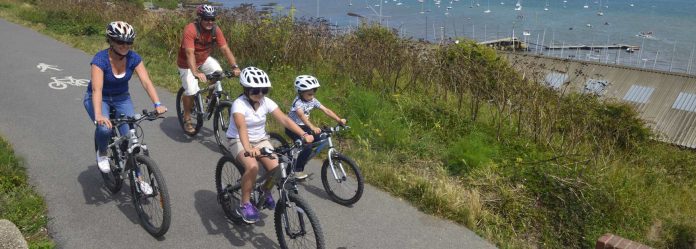A large number of cyclists oppose funding of bike paths, because they feel the money could be better spent elsewhere, like improving roads and educating the public on sharing the road. One very common argument is that building bike paths convinces cars that you don’t belong on the road, that instead you belong on the bike path, and that’s when unsurprisingly animosities begin.
Locally and nationally cycle paths are not very good: they are too narrow, shared with pedestrians, full of obstructions, poorly maintained and run out in weird places. As a frequent cyclist the most frustrating aspect is the amount of glass or hawthorn residue strewn across the path which results in several visits to the local bike shop for replacement tubes.
Most cyclists would agree it is faster, convenient and easier on the pocket to use the road; therefore why not simply stop constructing them ?
This does not mean that cycle paths are inherently bad. Plenty of countries and municipalities have developed cycle path design and construction standards that pass the test: they have proved attractive enough to help achieve mass cycling, while keeping cyclists of all disciplines (including roadies) and abilities happy. The best example is the Dutch network of cycle paths with cycling being one of the major modes of transport with approximately 40% of the people listing the bicycle as their most frequent mode of transport on a typical day.
This high frequency of bicycle travel is enabled by excellent cycling infrastructure such as cycle paths, cycle tracks, protected intersections, ample bicycle parking and by making cycling routes shorter, quicker and more direct than car routes. This mindset is driven by a cultural vision and acceptance that cycling is okay and this is where the UK is sadly lacking.
If we are to continue to construct these paths then we need to adopt a more stringent, cyclist friendly approach. We need to concentrate on systems which can accommodate large volumes of cyclists of various levels of proficiency and fitness; systems which are not added as an afterthought, filled with obstructions; systems which do not require users to give-way to minor roads and which prioritise cycle traffic; systems in which cyclists are not put in conflict with pedestrians; and systems which are well loved and maintained.
Whitlock McCann Media Ltd
Twitter: cadencemag Website: cadencemag.co.uk
Kazakhstan trip: http://www.pedaltheunknown.com







